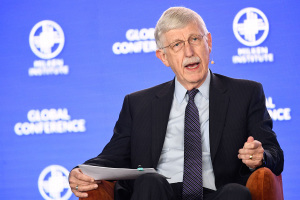The Fat Burning Zone
The next time you go to your health club, jump on a cardio machine and take a look at the pre-programmed options. Most often you will find a program called the Fat Burner or something similar. These programs are designed for you to exercise at roughly 50 to 60% of your maximum heart rate. Exercise within this intensity range is directly related to the use of fat for energy.
As the intensity of an exercise increases, your fuel source shifts from burning primarily fat to burning primarily carbohydrates. Fat and carbohydrates are essentially your largest energy suppliers. The concept behind these programs is sound—following them will make you burn fat. However, if you want to lose weight, is exercising at a low intensity (thus burning primarily fat) really the most effective method?
Weight loss is an extremely simple concept that is often made difficult. Every day you consume food, which gives you energy, and every day you expend some of this energy for basic body function, to digest food and for activity. Overall, the energy that you take in should be balanced with the energy you expend. This would result in a stable body weight. To lose weight you simply need to shift this equation so that you expend more energy then you consume. Whether the energy comes from fat or carbohydrate stores is not an issue. What is important is the amount of energy, or calories, you expend.
Let’s take a simple example: Two people with similar characteristics exercise for 30 minutes. Person A works at a low intensity of 50% of their heart rate max (an intensity within the Fat Burning Zone). Person B works at an intensity of 75% of their heart rate max. Person A is therefore burning primarily fat while Person B is primarily burning carbohydrate. Who burns more calories?
Although Person A is using a greater percentage of fat to perform the 30 minute bout of exercise, Person B is actually expending more calories. Since losing weight is only achieved by burning more calories than you consume, Person B is at a significant advantage in achieving their goal.
Another disadvantage to working at a lower intensity is that while you will achieve many health benefits, you will not necessarily achieve fitness benefits. Health benefits are those such as body weight control, lowered blood pressure and improved cholesterol. Fitness benefits are those such as improved endurance, strength and athletic performance.
A low intensity program, such as one in the Fat Burning Zone, would be recommended for those who cannot tolerate high intensity exercise. Therefore, those beginning a program, overweight people or individuals restricted due to medical problems will benefit from a low intensity program. But, if you are able to work at a higher intensity than that prescribed in a fat-burning program, do so, because you will burn more calories. Remember, at the end of the day, the only way to lose weight is to burn more calories than you consume.
Please also note, that while exercise alone will promote weight loss, the most effective weight loss method is through a combination of diet, exercise and behavioral changes.





























